Imagine transforming the dimmest corners of your home into lush, green sanctuaries bursting with life. Whether you’re a budding gardener taking your first steps or a seasoned plant enthusiast looking to expand your verdant collection, “Best Indoor Plants for Low Light” is your gateway to achieving just that. This guide is a treasure trove of resilient, easy-to-care-for plants that thrive even with minimal sunlight, making it an invaluable resource for anyone looking to bring the beauty of nature indoors without the worry of maintenance.
In these pages, you’ll discover hardy plant companions that not only beautify your space but also purify the air and boost your well-being. With practical tips and expert insights, you’ll gain the confidence to select and nurture the perfect plants for your unique environment. Embrace the joy and rewards of successful indoor gardening, knowing that these low-light champions are ready to flourish in your care. Whether you’re indulging your green thumb for the first time or adding to your indoor jungle, this guide ensures your gardening journey is a flourishing success.
Peace Lily (Spathiphyllum wallisii)
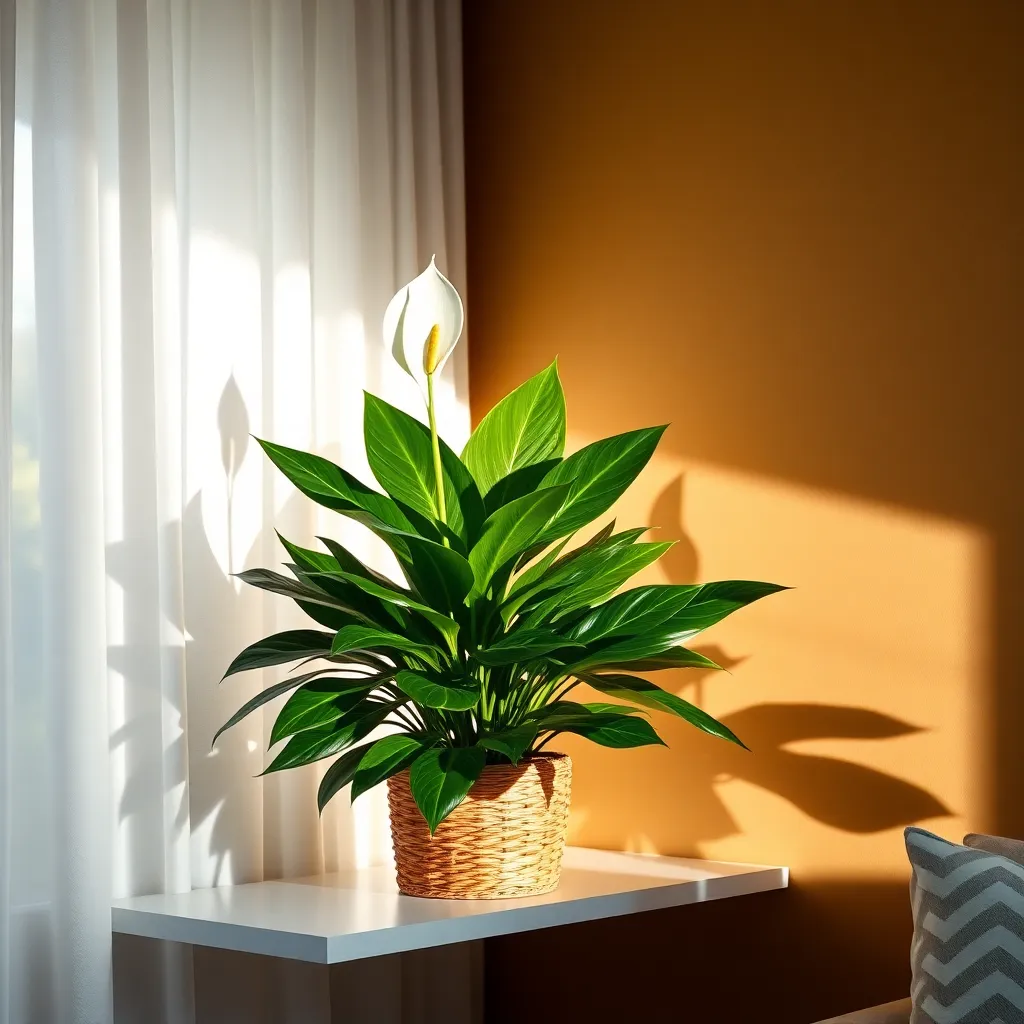
The Peace Lily (Spathiphyllum wallisii) is an excellent choice for low-light environments, making it a favorite among indoor gardeners. This plant thrives in indirect light and can even tolerate fluorescent lighting, which makes it perfect for office spaces.
When it comes to watering, it’s best to allow the top inch of soil to dry out between waterings. Overwatering can lead to root rot, so it’s crucial to ensure that your Peace Lily is not sitting in water.
To encourage healthy growth, use a well-draining potting mix, ideally one rich in organic matter. Fertilize your Peace Lily with a balanced, water-soluble fertilizer every six to eight weeks during the growing season for optimal results.
Beginner gardeners will appreciate the low-maintenance nature of the Peace Lily, but there’s room for advanced care as well. For those looking to improve air quality, this plant is known for its ability to filter toxins like formaldehyde and benzene from the air, making it both a beautiful and functional addition to any home.
Cast Iron Plant (Aspidistra elatior)
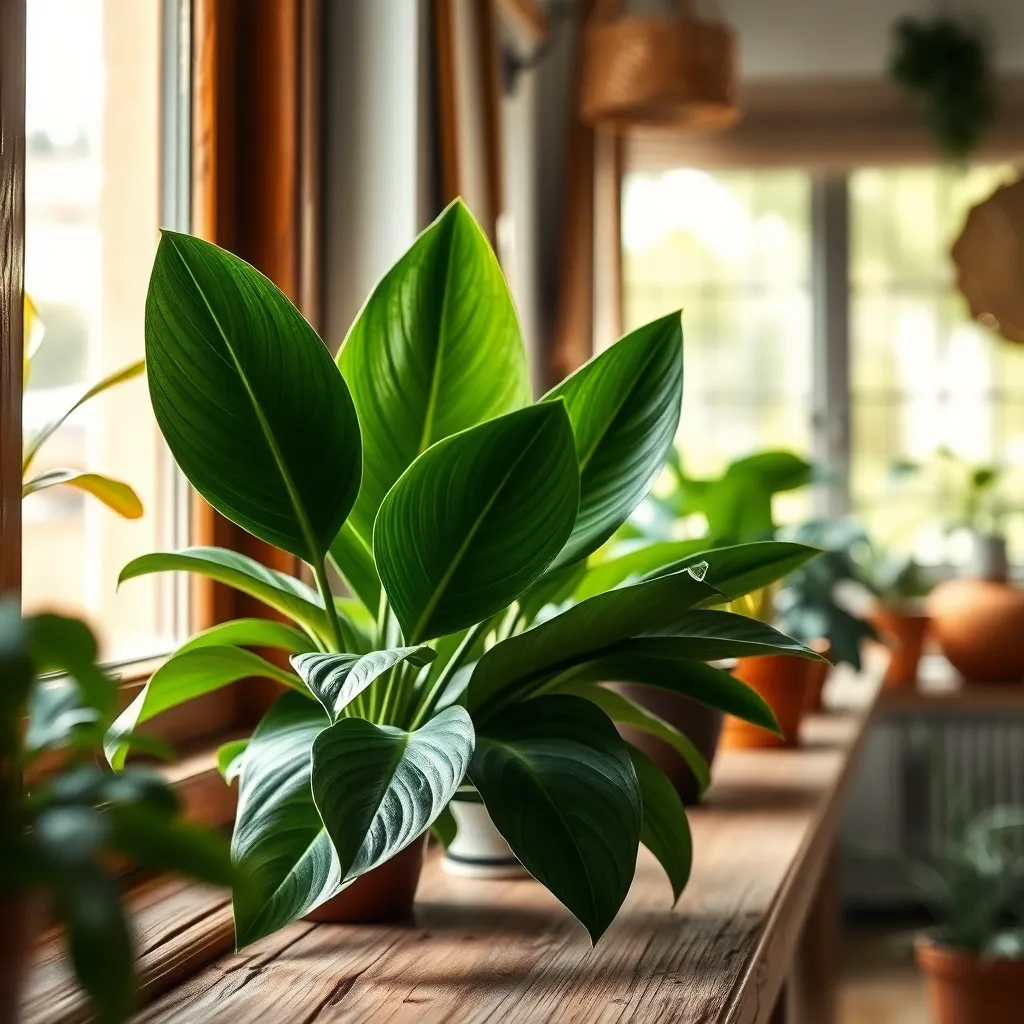
The Cast Iron Plant (Aspidistra elatior) is a superb choice for low-light environments, thriving where many other plants struggle. Known for its resilience, this plant can withstand neglect and continue to prosper, making it ideal for busy or novice gardeners.
Place your Cast Iron Plant in a spot with indirect light, as direct sunlight can scorch its leaves. While it tolerates low light, providing it with some ambient light encourages more robust growth.
Watering should be done sparingly; allow the top inch of soil to dry out between waterings to prevent root rot. A well-draining potting mix, such as a blend of peat and perlite, helps maintain the right moisture levels for healthy roots.
For those looking to give their plant a boost, consider fertilizing during the growing season with a balanced liquid fertilizer every 6-8 weeks. Remember, the Cast Iron Plant is a slow grower, so patience is key when waiting for new leaves to unfurl.
Chinese Evergreen (Aglaonema commutatum)
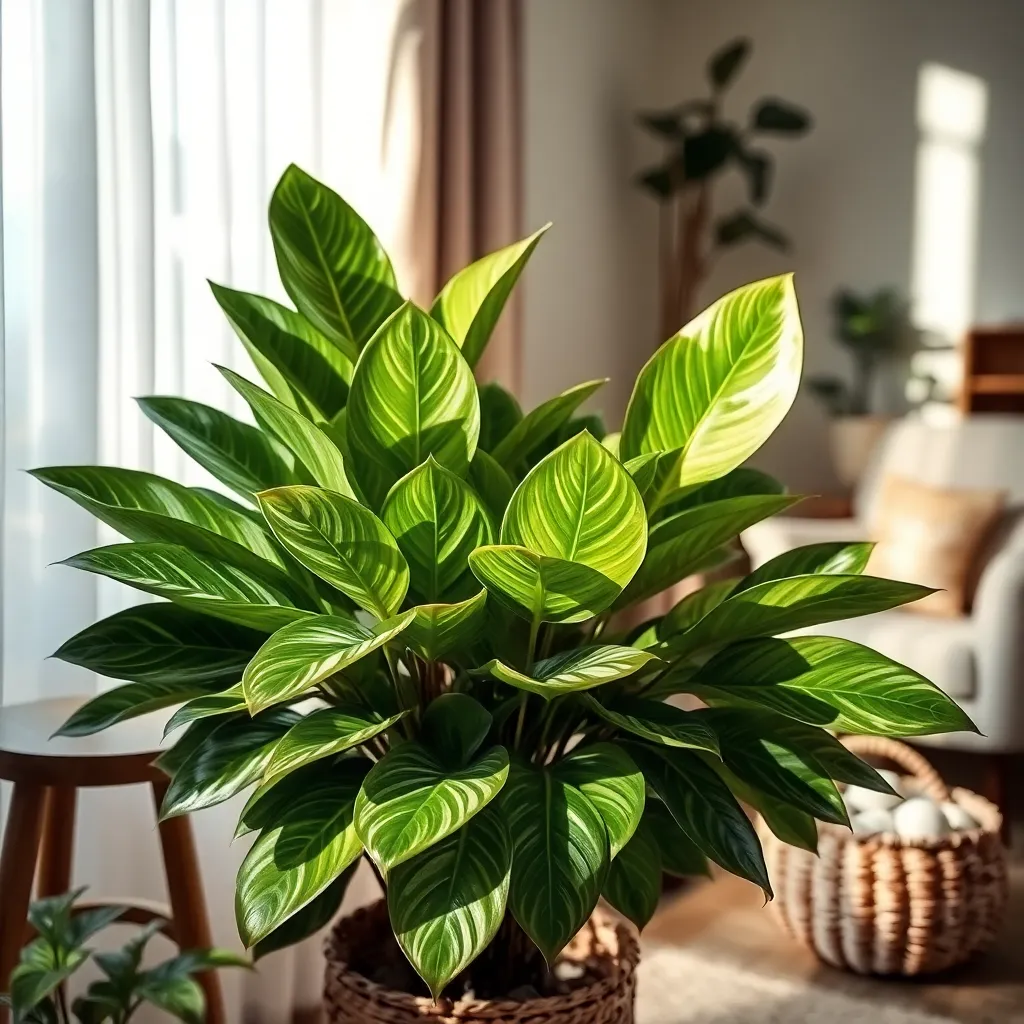
Another excellent choice for low-light conditions is the Chinese Evergreen (Aglaonema commutatum), known for its adaptability and attractive foliage. This plant thrives in indirect light, making it perfect for offices or rooms with limited sunlight.
To keep your Chinese Evergreen healthy, use a well-draining potting mix that retains some moisture. A mixture of peat, perlite, and potting soil is ideal, ensuring the roots don’t sit in water, which can lead to rot.
Watering should be done once the top inch of soil feels dry, usually every 1-2 weeks depending on your home’s humidity. Overwatering is a common mistake, so ensure the pot has drainage holes to prevent waterlogging.
Chinese Evergreens benefit from occasional fertilization during the growing season. Use a balanced, water-soluble fertilizer once a month in the spring and summer to encourage lush growth.
Parlor Palm (Chamaedorea elegans)
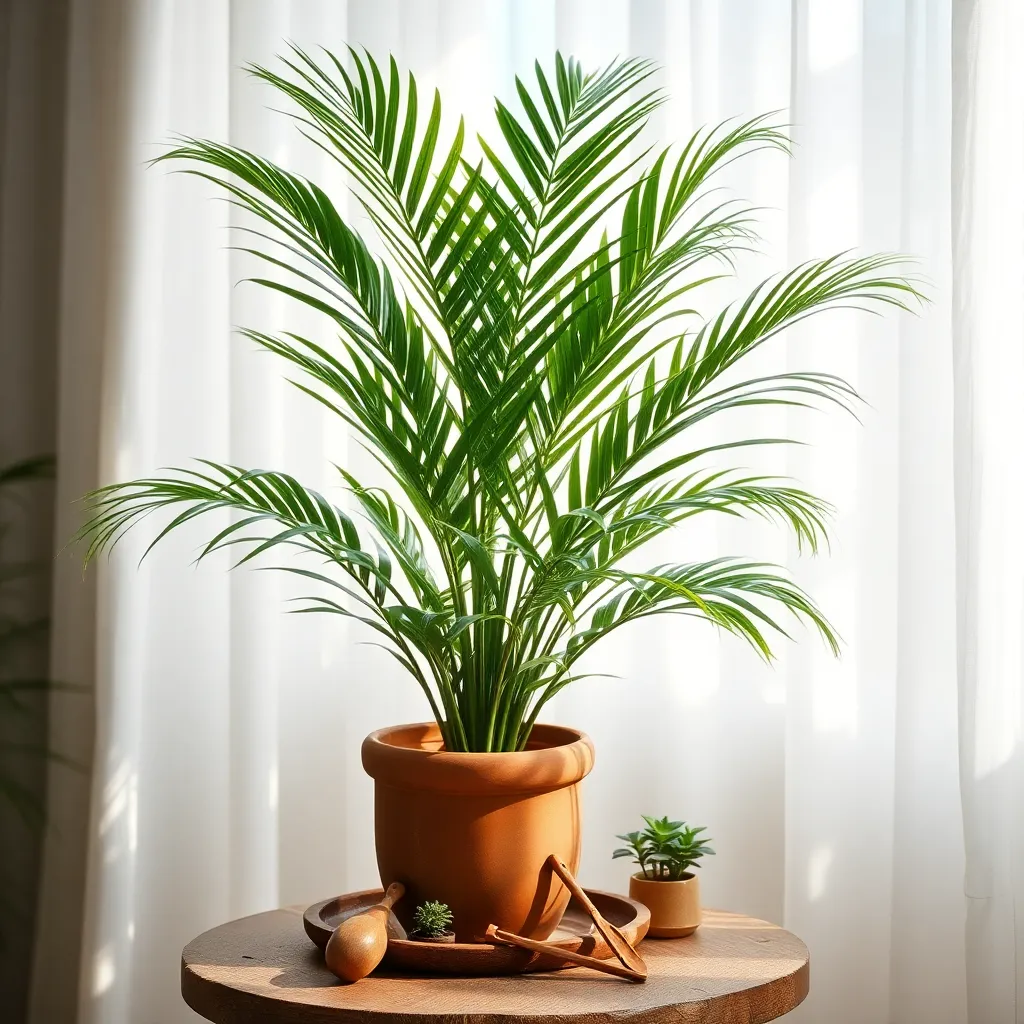
The Parlor Palm, or Chamaedorea elegans, is an excellent choice for those seeking a resilient plant that thrives in low-light conditions. This plant is ideal for beginners because it requires minimal maintenance and can tolerate some neglect.
To ensure your Parlor Palm flourishes, place it in a spot that receives indirect light, such as a north-facing window or a dim corner. Avoid direct sunlight as it can scorch the delicate leaves, leading to unsightly brown tips.
Water your Parlor Palm moderately, allowing the top inch of soil to dry out between waterings. Overwatering can lead to root rot, so it’s crucial to use a well-draining potting mix, such as a blend of peat moss and perlite.
For those looking to give their Parlor Palm a little extra care, consider misting its leaves occasionally to mimic its natural humid environment. Fertilize sparingly, only during the growing season with a balanced, water-soluble fertilizer, to promote healthy growth without overwhelming the plant.
Heartleaf Philodendron (Philodendron hederaceum)
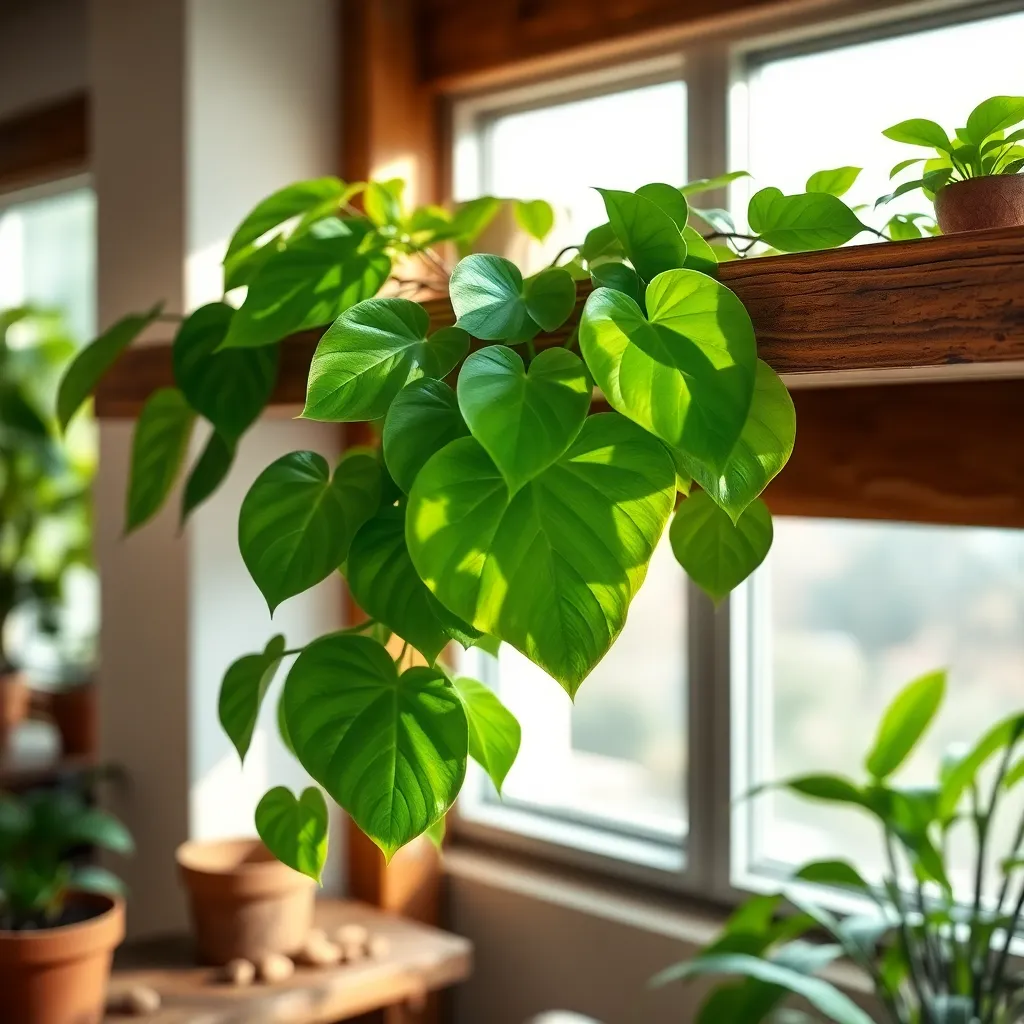
The Heartleaf Philodendron (Philodendron hederaceum) is a fantastic choice for indoor spaces with low light conditions. Known for its heart-shaped leaves and trailing vines, this plant adds lush greenery to any room without demanding much attention.
To ensure your Heartleaf Philodendron thrives, place it in a spot with indirect sunlight, as direct sun can scorch its leaves. Water it moderately, allowing the top inch of soil to dry out between waterings, which helps prevent root rot.
Using a well-draining potting mix is crucial for this plant; consider a blend specifically for aroids or a general houseplant mix with added perlite. Fertilize every 4-6 weeks during the growing season with a balanced liquid fertilizer to promote vigorous growth.
For those looking to propagate, Heartleaf Philodendron roots easily from cuttings. Simply snip a healthy stem with a few leaves and place it in water or soil, ensuring the node is submerged for successful root development.
Conclusion: Growing Success with These Plants
In exploring the nurturing world of indoor plants for low light, we’ve unearthed five key relationship concepts: the resilience of the Snake Plant, the adaptability of the Pothos, the enduring connection represented by the ZZ Plant, the calming presence of the Peace Lily, and the gentle care required by the Parlor Palm. Each plant symbolizes a unique aspect of thriving relationships, reminding us of the importance of resilience, adaptability, enduring connection, calmness, and care in nurturing our bonds.
As an actionable next step, consider introducing one of these green companions into your shared space to serve as a living reminder of these valuable qualities. Watch as it not only purifies your environment but also enriches your connection with each other.
Don’t forget to save or bookmark this article as your evergreen guide to cultivating both your living space and your relationships. Let it be a constant resource as you continue to grow together.
Remember, just like these plants, relationships flourish with consistent care and attention. By integrating these insights into your daily life, you’re on a path to achieving lasting relationship success. Your journey towards a more harmonious and thriving partnership begins today.

